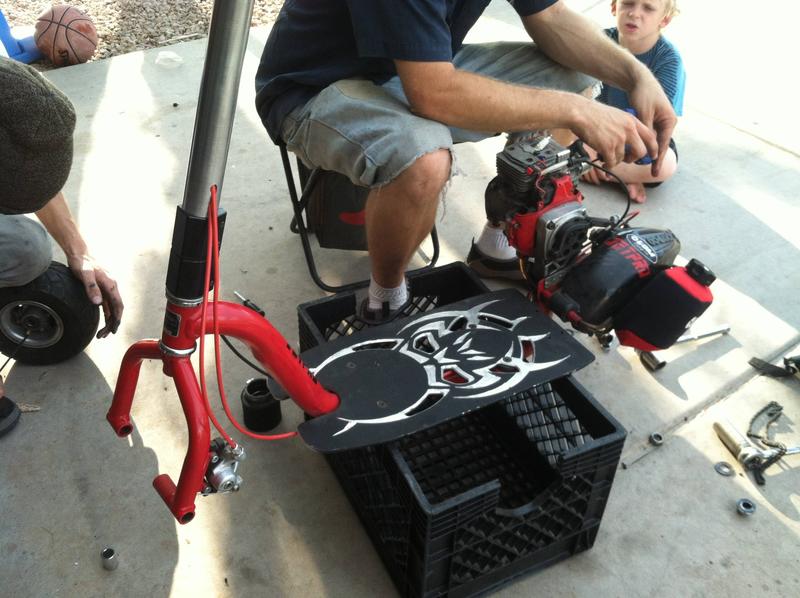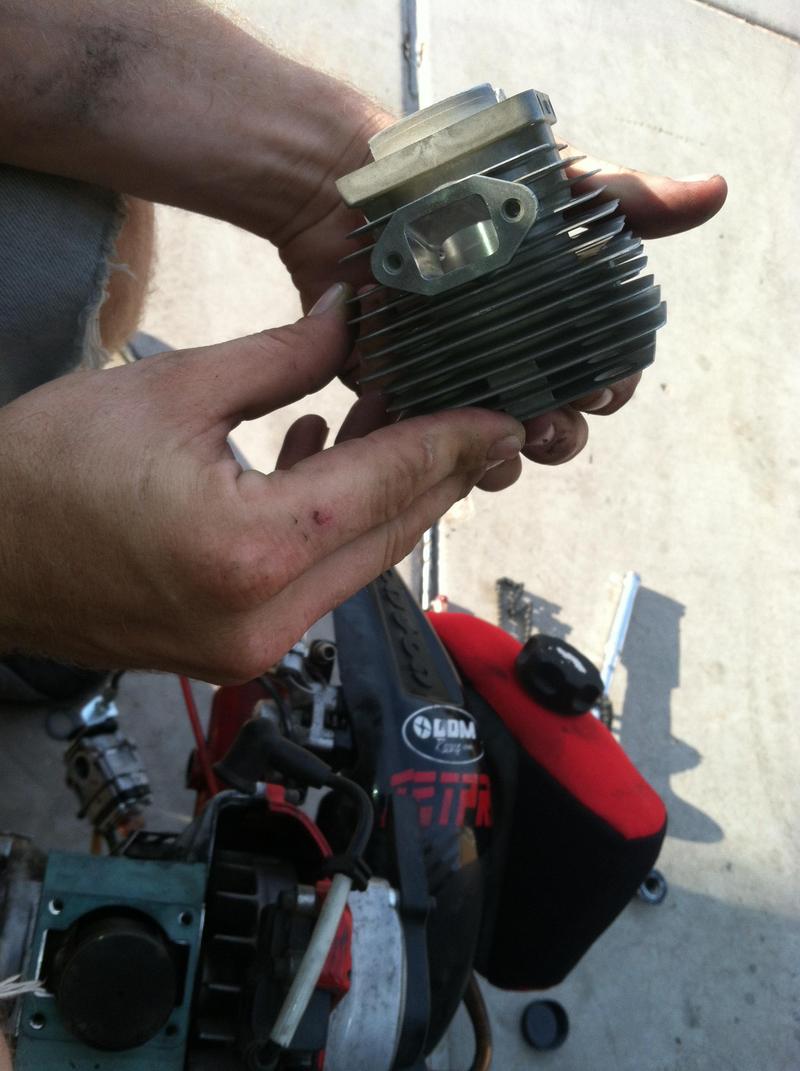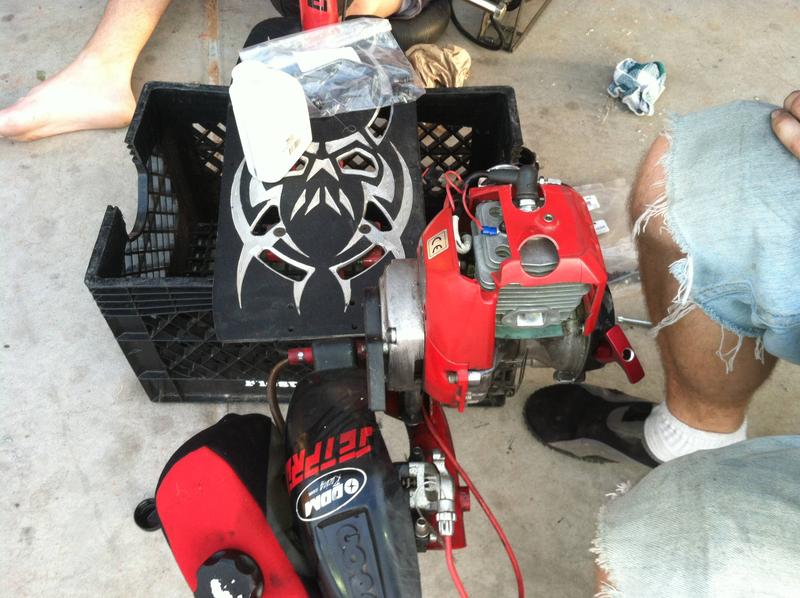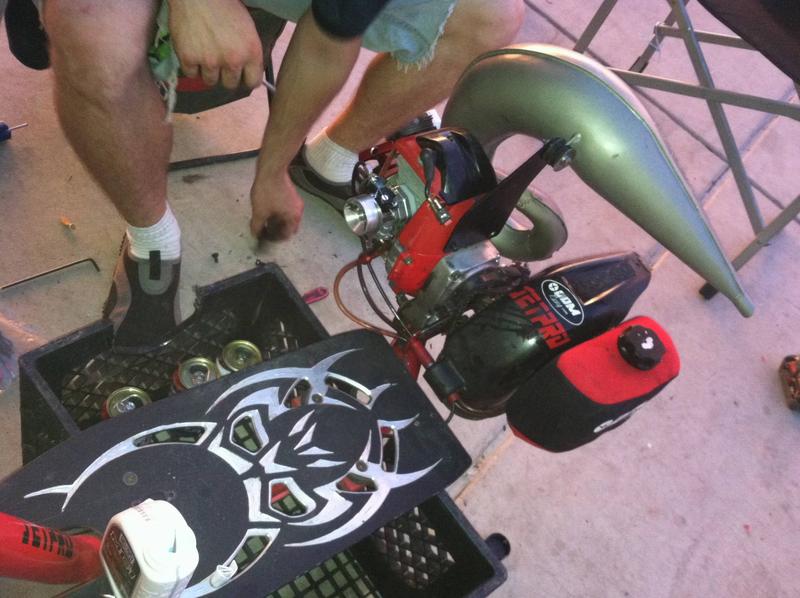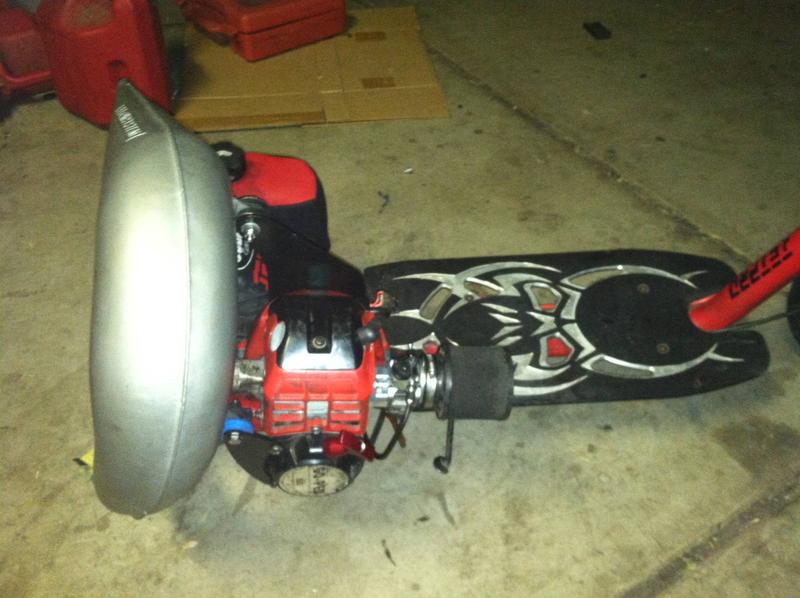Hi battery. Thanks for giving details on the problems you have encountered with the S.B.P. Shift Kit.
I take your points about the RHS chain loosening during use due to wear and also engine settling. That first one really can only be minimised by good chain care, but can never be prevented completely. I will have to stay on top of the chain care and design my chain tensioners carefully.

The second point I had not read about on the forum until now, which makes me very glad I asked the question!

Do you have the adjuster rod installed with nuts locked together so that they cannot back off? I notice in the shift kit installation PDF that they show only one nut underneath the rear mount. Logic would suggest there should be two to prevent engine settling. Do you think this would work? I read in the PDF about needing to re-adjust the RHS chain tension a few times during the first ride; but it sounds like this problem has been more persistent.. not sure if you meant it that way? I intend to fit a RHS chain tensioner anyway, though I'll have to see about the amount of spring tension- I'd like to keep it as little as possible because adding spring tensioners increases parasitic drag and reduces power output.....
I agree that the extra chains and sprockets (and tensioners if fitted) add extra parasitic drag to the system, which of course reduces "power"; but that's not a reliability issue, and anyway measured power is not as important as being able to apply that power to the road surface at all times, which is where gears are essential.
I also agree that adding complexity also adds potential modes of failure. With the help of MBc members posting their experiences I
hope that I can pre-emptively fix most of these failures. Is your freewheel the heavy duty White Industries (HD) one? Has it actually failed or did you mean only to point out that it is a
potential point of failure?
I
think the problem of the final chain derailling accidentally can be solved with enclosed chain retention devices, not neccesarily a front derailleur, and
not neccesarily including a dual range.. Fabian. 
I've found the DMR chain retention devices to be very simple to set up and customise when I've used them on (single range, geared) bicycles.
Everything always needs customised fitting though.. that's just part of the (motorised or not) bike building hobby IMHO.
I do intend to pedal my bike, whilst also using engine power, and also use pedal power or engine power alone. If that turns out to be possible I will be absolutely "over-the-moon" and "chuffed to ninepence". I am fairly sure of the quality of the freehubs I will be using. I have a spare 48h Hope Big Un tandem rear hub that I can fit if the one in my original wheelset fails. During a ride of course, a broken freehub can be temporarily converted to a fixie, capable of taking at least moderate pedal power, by means of wiring the cassette to the drive side spokes- much like the awful rag joints that come with the China girl kits. You should never have to walk a bike with a slipping freehub if there is wire (i.e. farm fences) available somewhere nearby or in your toolkit.
I realise that the success or failure of my project lies mainly in the quality of my work, and the thoroughness of my homework (which is what I'm doing here

) so thank you for pointing out a few potential hazards and "bumps in the road".

and I hope your head's okay this morning.



